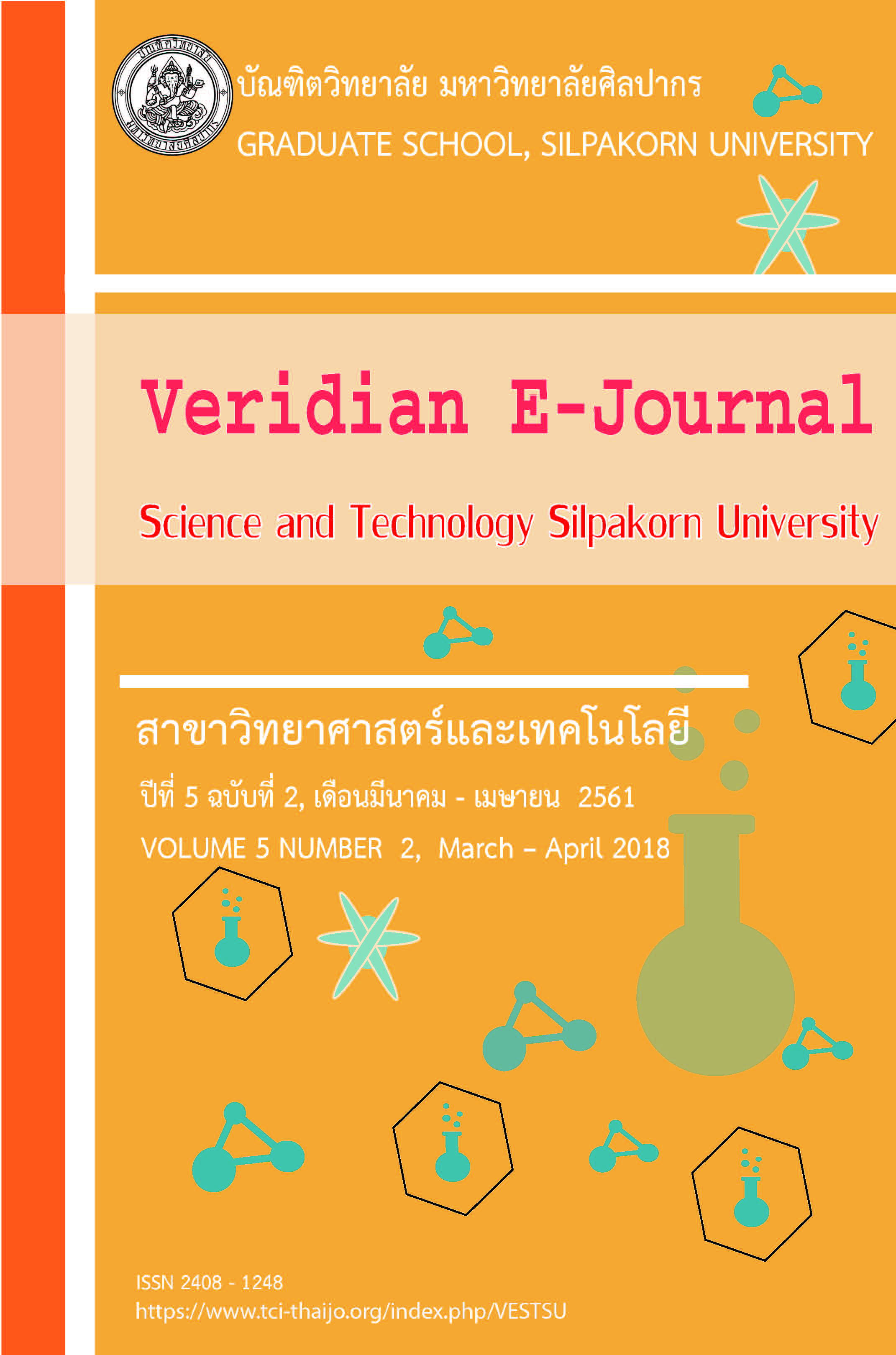การสืบพันธุ์แบบไม่อาศัยเพศของปลิงดำแข็ง Holothuria (Halodeima) atra Jaeger, 1833 บริเวณหาดเทียน เกาะแสมสาร อำเภอสัตหีบ จังหวัดชลบุรี (Asexual Reproduction of Holothuria (Halodeima) atra Jager, 1833 at Haad Tein, Samaesarn Island, Sattahip District, Chonb Asexual Reproduction of Holothuria (Halodeima) atra Jager, 1833 at Haad Tein, Samaesarn Island, Sattahip District, Chonburi Province
Main Article Content
Abstract
เพื่อศึกษาการสืบพันธุ์แบบไม่อาศัยเพศโดยการบิดตัวขาดเป็นสองท่อนแล้วงอกใหม่ของปลิงดำแข็ง (Holothuria (Halodeima) atra) และความสัมพันธ์ระหว่างร้อยละการแบ่งตัวของปลิงดำแข็งกับปริมาณอินทรียวัตถุในดินตะกอนบริเวณที่อยู่อาศัยในบริเวณเขตน้ำขึ้นน้ำลงของหาดเทียน เกาะแสมสาร อำเภอสัตหีบ จังหวัดชลบุรี ตั้งแต่เดือนกรกฎาคม 2559 ถึงเดือนพฤศจิกายน 2560 โดยการสำรวจ 2 เดือนต่อครั้ง ในการศึกษาครั้งนี้ปลิงดำแข็งถูกจำแนกตามลักษณะทางสัณฐานวิทยา (morphology) แบ่งออกเป็นปลิงดำแข็งสมบูรณ์ (normal individual) และปลิงดำแข็งที่เกิดจากการแบ่งตัว (fissiparous individual) ผลการศึกษาระบุค่าเฉลี่ยของจำนวนปลิงดำแข็งสมบูรณ์ (46 ตัว) สูงกว่าปลิงดำแข็งที่เกิดจากการแบ่งตัว (36 ตัว) ปลิงดำแข็งสามารถสืบพันธุ์แบบไม่อาศัยเพศโดยการแบ่งตัวได้ตลอดทั้งปี โดยเดือนที่มีการแบ่งตัวมากที่สุด คือ เดือนมีนาคม 2560 (80%) รองลงมาคือ เดือนพฤศจิกายน 2560 (62.5%) และเดือนพฤษภาคม 2560 (53.3%) ตามลำดับ ปริมาณอินทรียวัตถุในดินตะกอนบริเวณที่อยู่อาศัยของปลิงดำแข็งมีค่าเฉลี่ยเท่ากับ 0.89% นอกจากนี้จำนวนปลิงดำแข็งที่เกิดจากการแบ่งตัวไม่มีความสัมพันธ์กับร้อยละอินทรียวัตถุในดินตะกอนบริเวณที่อยู่อาศัย แสดงว่า อินทรียวัตถุในดินตะกอนอาจจะไม่ใช่ปัจจัยหลักสำหรับปลิงดำแข็งในการแบ่งตัวแบบไม่อาศัยเพศ การศึกษาต่อไปควรจะศึกษาปัจจัยสิ่งแวดล้อมอื่น ๆ ที่เกี่ยวข้องกับการสืบพันธุ์แบบไม่อาศัยเพศ
To investigate asexual reproduction of Holothuria (Halodeima) atra by regeneration and the relationship between the percentage of fissiparity and organic matter in the sediment from their own habitat at intertidal zone of Haad Tein, Samaesarn Island, Sattahip district, Chonburi province from July 2016 to November 2017, bimonthly. In this study, H. (H.) atra was categorized by morphology to be normal and fissiparous. The results show that the mean number of normal individuals (n= 46) was higher than the mean number of fissiparous individuals (n=36). The fissiparity of H. (H.) atra occurred throughout the year and the monthly incidence of fission in March (80%) was highest and followed by November (62.5%) and May (53.3%). The mean organic matter percentage in habitat sediment of H. (H.) atra was 0.89 and it was not statistically different throughout the study. In addition, the number of fissiparous individuals of H. (H.) atra was not correlated with the organic matter percentage. It was suggesting that the organic matter in sediment may be not the main factor for asexual reproduction of H. (H.) atra. Further study should be conducted to identify the specific environmental factors that determine asexual reproduction.

